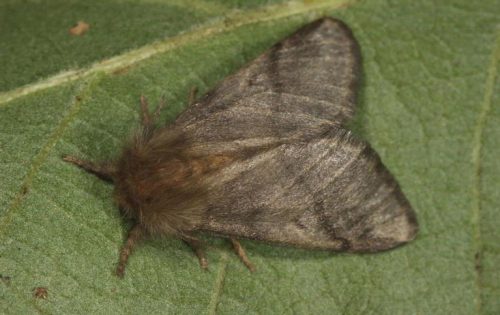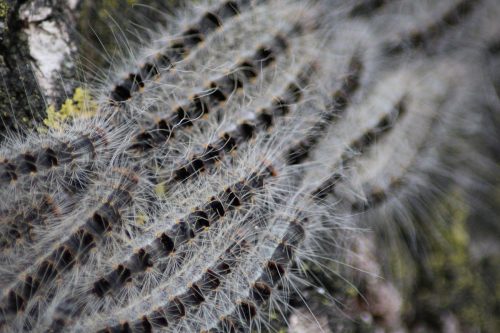The oak processionary is a moth originally found only in southern Europe. Starting in the late twentieth century, this caterpillar also occurs in the UK.
Also known as:
oak processionary butterfly
oak processionary caterpillar butterfly
Oa
For both the tree (caterpillar eats leaves) and humans, the oak processionary is a pest. The caterpillar is covered with long white hairs and very small (0.2 to 0.3 mm) defensive bristles. The defensive bristles are arrow-shaped and have barbs; the caterpillar “shoots” the defensive bristles away at impending danger. The defensive bristles can enter the eyes, respiratory tract and skin where they cause allergy-like symptoms. The defensive bristles are spread by the wind so that passing hikers, cyclists and dogs can come into contact with them.
Oak is the host plant of the oak processionary: the moth lays its eggs at the top of trees in September. In spring, the eggs hatch at the same time as the leaves, and the larvae begin to feed on the leaves. The caterpillars’ nests consist of spins and droppings, defensive bristles and old skins (from molting). At night, the caterpillars go in a long thick line – “in procession” – in search of other oaks; during the day, they remain in the nest.
Great tits, parasitoid wasps and parasitic flies are among the natural enemies of the oak processionary.
Where to find
- Eik (vooral zomereik) – waardplant
- Hazelaar
- Haagbeuk
- Tamme kastanje
- Berk
- Beuk
Control
Removing the nests is specialist work by companies that are certified for this purpose.
In agriculture and horticulture, a biopesticide based on the bacterium Bacillus thuringiensis is used to control oak processionaries.
Biopesticide products based on Bacillus thuringiensis are commercially available for private use.
Prevention
Provide a few great tit boxes in the immediate vicinity of oak trees.


